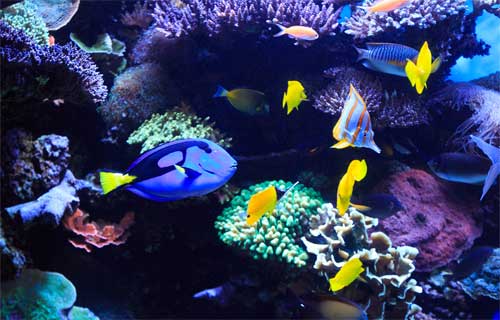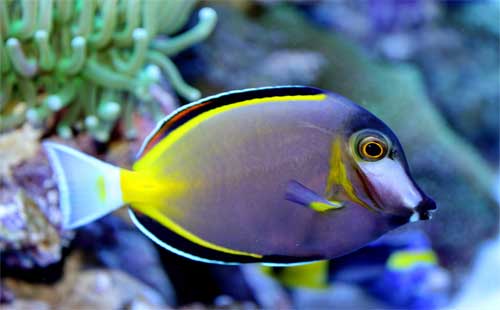Dory’s cartoon character in “Finding Nemo” in real is a blue tang fish. Blue tang fish are recognized by their bright blue coloring and yellow tail. These fishes are found in the Indian Oceans and Pacific Oceans.
Finding Nemo is a 2003 American computer-animated adventure film that was produced by Pixar Animation Studios and released by Walt Disney Pictures. And Written and directed by Andrew Stanton with co-direction by Lee Unkrich. The film stars the magnificent and amazing voices of Albert Brooks, , Alexander Gould, Ellen DeGeneres and Willem Dafoe. The cartoon series tells the story of the domineering ocellaris clownfish named Marlin who, laterally with a regal blue tang named Dory, searches for his kidnaped son Nemo all the way to Sydney Harbor. Beside the way, Marlin learns to take risks and comes to terms with Nemo taking upkeep of him.
Although people now recognize 2003’s Finding Nemo as one of Pixar’s most unfavorably and commercially successful films, the submerged masterpiece didn’t exactly kick off production as a guaranteed goldmine.

The real species of Dory
If you want to know that what kind of fish is dory then Dory’s character in “Finding Nemo” is a blue tang fish in real. Blue tang fish are considered by their bright blue coloring and yellow tail. These fish are originating in the Pacific and Indian Oceans.
In distinction to some other species of fish, blue tangs do not usually swim in schools and are more often found in pairs beside the coral reefs. While these fish look inoffensive, they actually have a unique protection mechanism to ward off superior predators. Each fish has spines along its back and tail that are poisonous and unfold to inflict harm on the predator when the fish is caught.
Size and description
Regal blue tangs are identified by their bright blue coloring, oval bodies and yellow, flag-shaped tails. Their pectoral fins are too yellow. Adult’s tangs have a narrow line of dark blue along their dorsal fin that curves back at the tail. Its semblance to the numeral 6 gives the fish one of its evocative names.
Adult regal blue tang fish classically weigh around 21.15 ounces (600 grams) and are 4.72 to 14.96 inches (12 to 38 centimeters) long. Males are usually larger than females.
Habitat of Blue Tang
As one name of the fish infers, these fish live in the Pacific Ocean, but they are similarly found in the Indian Ocean, from East Africa to Micronesia, rendering to the International Union for Conservation of Nature (IUCN). Their homes are the coral ridges that grow along the shores. They particularly like to hide in the protecting branches of cauliflower coral.
Easy to spot fish
 The blue tang is classically found on reefs in high current zones so that they can feed on zooplankton. Blue tangs are easy to find and spot due to their bright coloration. They are naturally a vibrant blue with a yellow tail. This fish have two black lines. One line the tang fish forms the eye, along the back, and atop the tail. The additional lines of the fish from the gills to the back of the tail and the pectoral fins can have some yellow pattern on them. This fish’s body is ovoid shaped and flat.
The blue tang is classically found on reefs in high current zones so that they can feed on zooplankton. Blue tangs are easy to find and spot due to their bright coloration. They are naturally a vibrant blue with a yellow tail. This fish have two black lines. One line the tang fish forms the eye, along the back, and atop the tail. The additional lines of the fish from the gills to the back of the tail and the pectoral fins can have some yellow pattern on them. This fish’s body is ovoid shaped and flat.
Blue tangs are unsociable individuals, but can be found in groups when nursing. During mating season the blue tangs form minor harems containing of one male and numerous females.
Young blue tangs start out bright yellow with blue spots near their eyes. As they matured, then the color change Adult’s tangs may grow white spots along their sides as they age.

Vivan Henderson, a professional photographer born in Texas. Photography is his passion. He was fond of nature in his childhood. So he took his passion as a profession. He is basically nature photographer but also take other type of photo. He completed graduation in computer science from Texas Tech University. He lives in Houston with his wife and two children’s.





